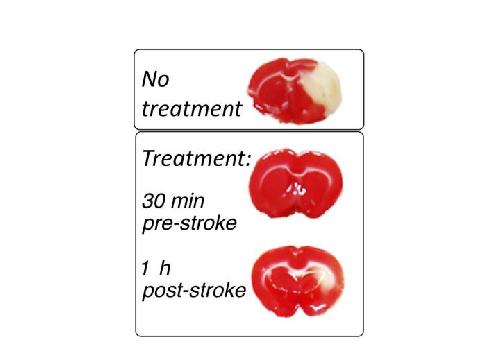After suffering a stroke, about three-fourths of patients exhibit some disability. The extent of a patient's symptoms depends on the degree and location of brain tissue damage following the stroke event. This week in ACS Central Science, researchers show that by using a tailored small molecule to turn off the production of a key neuromodulator in the brain, they can dramatically reduce brain damage in stroke models in rats.
The neuromodulator is the gas hydrogen sulfide (H2S). Its production is carefully controlled in the brain. After a stroke, levels of H2S appear to be elevated, leading to brain tissue damage, but the details of how that happens are still a bit of a mystery. So, David B. Berkowitz and coworkers designed a quick way to synthesize molecules they deduced would inhibit the production of H2S. They showed in vitro that these compounds block an enzyme called CBS from making H2S by mimicking one of its other products. Peter T. H. Wong and colleagues then tested the compounds in rats. When the new compound was injected an hour after the simulation of a stroke, the authors observed about a 70 percent reduction in the severity of the observed stroke damage. The results were even more striking with pretreatment. The authors conclude that using molecules like the ones they made will help researchers dissect the mechanism underlying H2S-mediated neuronal damage and will serve as an important starting point for the development of even more drug-like compounds that act in a similar manner.
 By injecting a tailored new compound into the brains of rats, researchers can significantly reduce neuronal damage resulting from stroke. The treatment works both before and after the stroke has occurred. Credit: The American Chemical Society
By injecting a tailored new compound into the brains of rats, researchers can significantly reduce neuronal damage resulting from stroke. The treatment works both before and after the stroke has occurred. Credit: The American Chemical Society
source: American Chemical Society